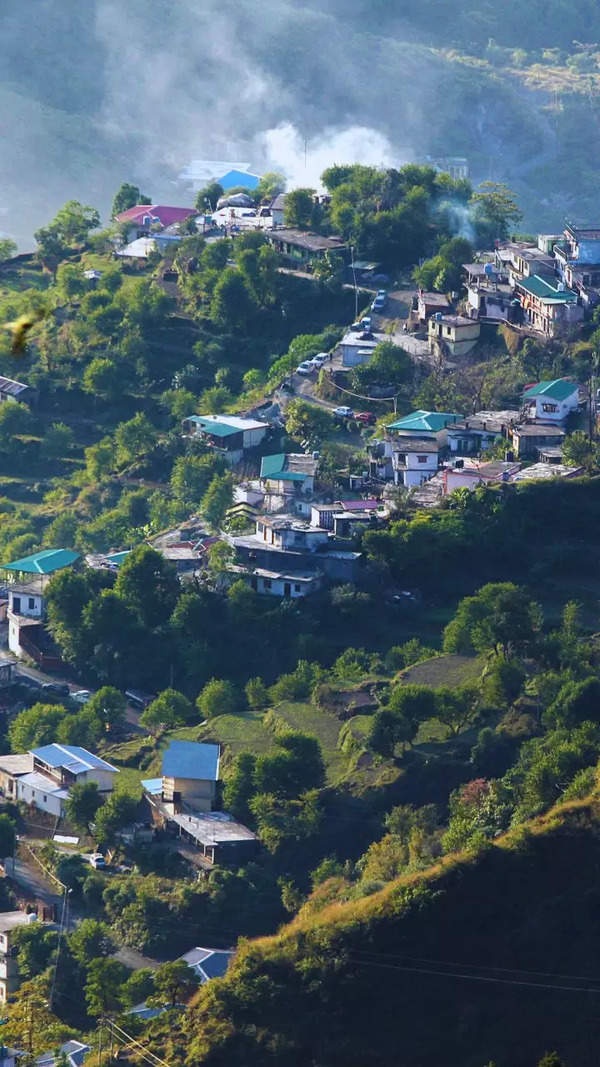- News
- World News
- Top 10 fastest-growing cities in world where Asia leads with 4 notable cities from India including Delhi
Trending
This story is from October 14, 2024
Top 10 fastest-growing cities in world where Asia leads with 4 notable cities from India including Delhi
Urbanisation is significantly impacting global societies with a rapid population shift from rural to urban areas. By 2050, 68% of the world's population will be urban dwellers, driven by technological advancements and economic opportunities. Asia and Africa lead the growth, with India and China's cities among the fastest-growing. Urban expansion is boosting infrastructure and economic development.
As the world undergoes significant changes, urbanisation emerges as one of the most impactful shifts affecting societies worldwide. A large segment of the population is moving from rural areas to cities, which are transforming into dynamic hubs of economic activity, cultural interaction, and innovation. This phenomenon not only indicates demographic changes but also reflects advancements in technology and evolving lifestyles.
Currently, about 55% of the global population resides in urban areas, and the United Nations anticipates that this number will rise to 68% by 2050, equating to approximately 2.5 billion additional people living in cities. The swift pace of urbanisation, propelled by technological advancements, is fostering a gradual transition of populations from rural regions to urban centres, thereby enhancing urban performance significantly.
Concentration of growth in Asia and Africa
Nearly 90% of urban growth is taking place in Asia and Africa, underscoring the allure of cities in Asia, which present a unique blend of rising wealth, growing economies, and opportunities for new developments and business expansion. Asia leads the world in growth hubs, hosting 14 of the top 15 centres for growth. The focus on technology-driven progress solidifies its status as a frontrunner in urbanisation.
Emergence of a rising Middle class in Asia
As personal wealth continues to increase across Asia, many cities are witnessing the emergence of a thriving middle class. Countries like Vietnam, India, and the Philippines are experiencing substantial growth in households earning over $70,000.
Fastest-growing cities by 2033
Source: Savills Research
Vietnam's urban success with Ho Chi Minh City and Hanoi leading growth
Vietnam stands out with two cities in the top fifteen: Ho Chi Minh City, which benefits from the rapid growth of high-income families, and Hanoi, which thrives on increasing personal wealth and a developing middle class. Despite a slowdown in the Chinese economy, cities like Shenzhen, Guangzhou, Suzhou, Wuhan, and Dongguan remain among the top 15 global growth hubs due to their robust infrastructure and efficient commuting options.
The Growth Hubs Index, which complements the Savills Resilient Cities Index, forecasts the economic trajectories of 230 cities up to 2033, identifying the fastest-growing urban centres. Riyadh, the capital of Saudi Arabia, is noteworthy as the only city in the Middle East among the top 15 global growth hubs. It is projected to experience a 26% population increase, growing from 5.9 million to 9.2 million within a decade, a development crucial to Saudi Arabia’s economic objectives that will require sustained government investment in infrastructure and services.
India's urban landscape
In India, 35% of the population currently lives in urban areas. Rapid urbanisation has positioned five Indian cities among the top 15 global growth hubs. Notably, New Delhi is expected to become the world’s most populous city by 2030, driven by a substantial influx of migrants from Tier-2 and Tier-3 cities.
Additionally, India's strong services sector, supported by a young and educated workforce, is set to propel growth in banking, finance, and technology. Major IT hubs such as Bengaluru, Mumbai, and Hyderabad are projected to achieve the highest rates of GDP growth per capita over the next decade among the analysed cities.
Also Read | Business figures who became billionaires after 40 including Henry Ford, Ray Kroc and more
End of Article
FOLLOW US ON SOCIAL MEDIA
Visual Stories
Hot Picks
TOP TRENDING
Explore Every Corner
Across The Globe











